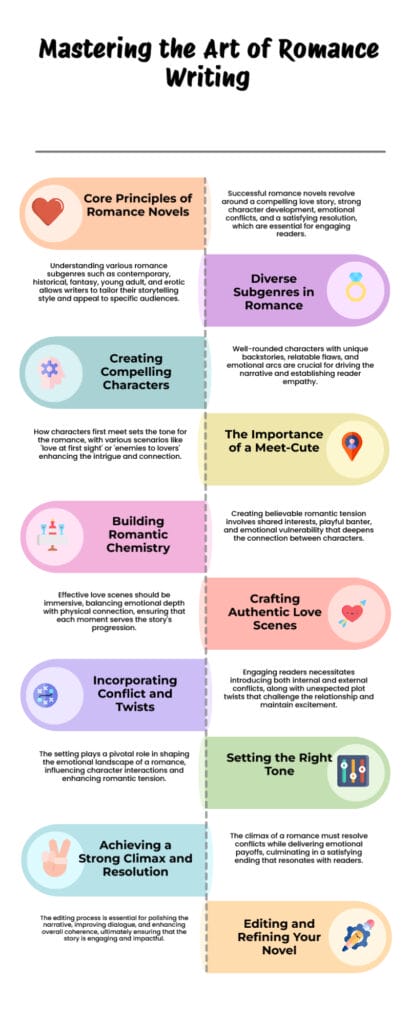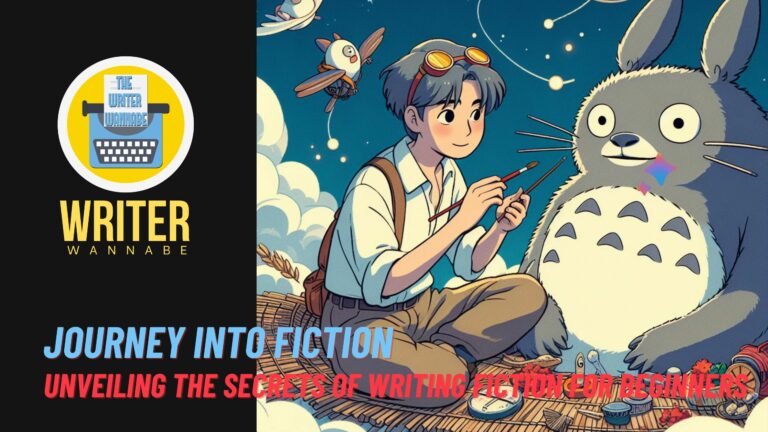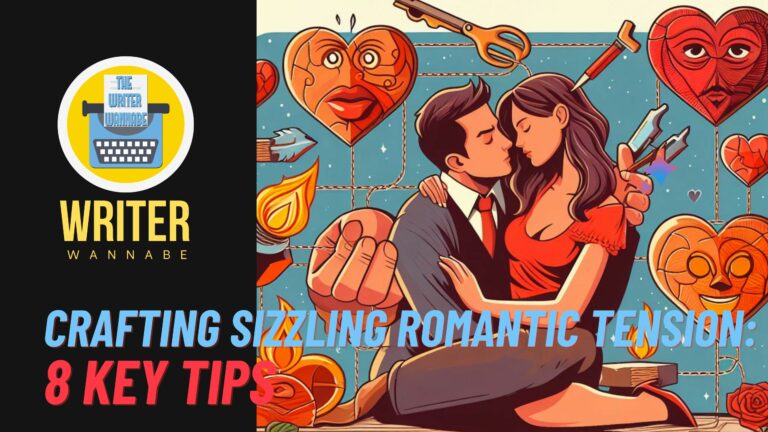Unlocking Your Inner Cupid: A Step-by-Step Guide on how to write a romance novel
Romance writing, cherished by readers worldwide, is more than just telling a love story. It’s an intricate dance of emotion, character development, and compelling narratives that capture the essence of human relationships. Whether you’re writing your first romance novel or are an experienced romance novelist, mastering the craft can elevate your storytelling and captivate romance readers. This guide to writing romance will walk you through the essential elements of romantic fiction, offering expert tips to make your love story feel authentic and engaging. If you’ve always wanted to write a romance novel, this is the perfect starting point.

The Key Characteristics of a Successful Romance Novel
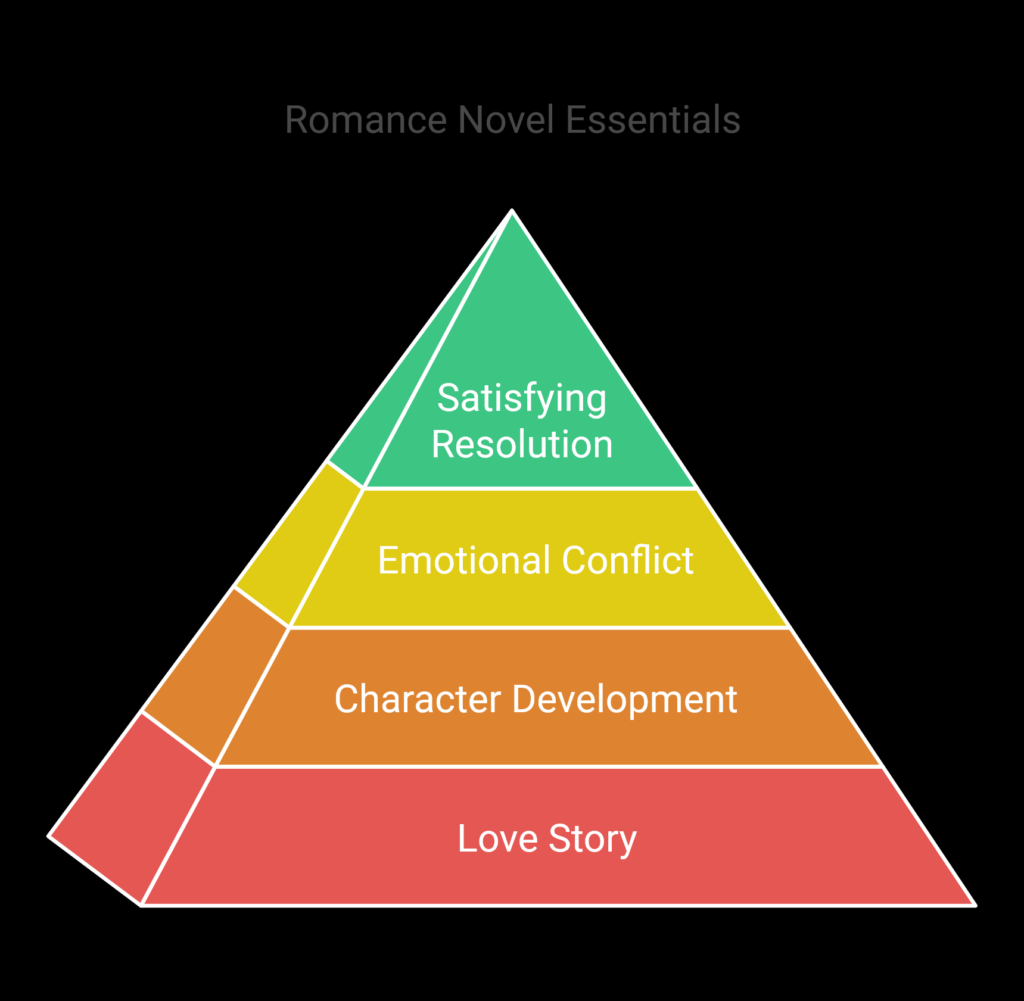
Romantic fiction follows a few core principles that define the genre of fiction. Here are the characteristics of romance that every romance author should consider:
- A Compelling Love Story: At the heart of every romance novel lies a romantic relationship between two central characters.
- Strong Character Development: The protagonists must be well-developed, with distinct personalities and believable motivations.
- Emotional Conflict and Tension: Challenges—whether internal or external—add depth and drive the plot forward.
- A Satisfying Resolution: Most romance readers expect a happy ending or at least a hopeful conclusion.
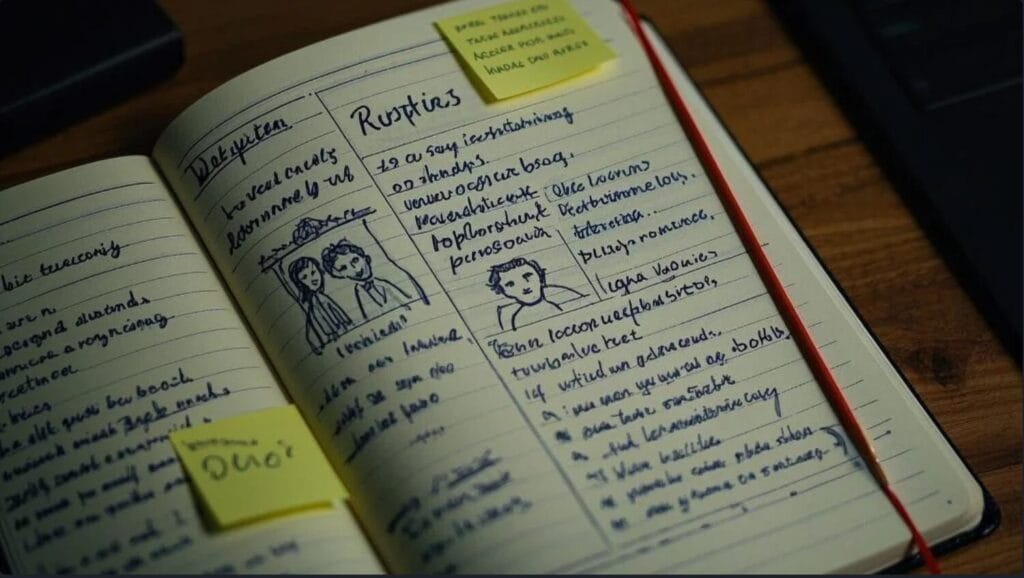
Exploring the Subgenres of Romance
Many romance subgenres exist, offering endless possibilities for writers. Choosing the right subgenre can help you refine your storytelling approach. Some popular ones include:
- Contemporary Romance: Set in the present day with relatable, modern love stories.
- Historical Romance: Features love stories set in different historical periods.
- Fantasy Romance: Blends elements of fantasy with love stories, often featuring mythical creatures or magical settings.
- Young Adult Romance: Focuses on young protagonists navigating first loves and emotional growth.
- Erotic Romance: Incorporates explicit love scenes while maintaining a strong emotional connection between characters.

Step-by-Step Guide to Writing Your Romance Novel
1. Creating Compelling Characters
A well-structured romance relies on well-developed characters. When creating characters, consider their:
- Backstories: These shape their motivations, fears, and desires.
- Flaws and Strengths: Perfect characters are boring; give them real struggles.
- Emotional Arcs: Show how they grow alongside the characters they interact with.
2. Crafting the Perfect Meet-Cute
How the romantic couple meets sets the tone for the romance novel. Some classic ways characters meet include:
- Love at First Sight: Instant attraction, but with complications.
- Enemies to Lovers: Initial conflict that gradually transforms into passion.
- Fate or Destiny: A series of coincidences bringing them together.
3. Building Romantic Chemistry and Tension
To make characters fall in love believably, writers write moments of deep connection:
- Shared Interests: Finding common ground strengthens their bond.
- Playful Banter: Witty dialogue adds charm and excitement.
- Emotional Vulnerability: Characters revealing their fears or insecurities makes their love feel real.
4. Writing Love Scenes That Feel Authentic
Love scenes are a fundamental part of many romance novels. To write with passion, keep these tips in mind:
- Show, Don’t Tell: Use sensory details to immerse readers.
- Balance Emotion and Physicality: A good love scene goes beyond physical descriptions.
- Make It Meaningful: Each intimate moment should advance the story or character development.
5. Developing Conflict and Plot Twists
To keep readers engaged, incorporate challenges that test the relationship. Consider:
- Internal Conflicts: Fears of commitment, personal insecurities, or past traumas.
- External Conflicts: Family opposition, career obstacles, or misunderstandings.
- Plot Twists: Unexpected events that shake up the love story.
6. Setting the Tone for the Romance
The setting and atmosphere influence the emotions of your story. Whether it’s a cozy small-town setting or a lavish European getaway, the location should:
- Reflect the Characters’ Emotional State
- Enhance the Romantic Tension
- Be a Symbolic Element in the Story
7. Writing a Strong Climax and Resolution
A well-structured romance builds to an emotional climax, followed by a satisfying conclusion. The climax should:
- Resolve the Main Conflict
- Deliver Emotional Payoff
- Lead to a Happy or Hopeful Ending
8. Editing and Polishing Your Romance Novel
Once you’ve completed your draft, it’s time to refine it:
- Read Aloud: This helps catch awkward dialogue or pacing issues.
- Seek Feedback: Get a sense of what resonates with readers.
- Revise for Clarity: Ensure the narrative flows smoothly and remains engaging.
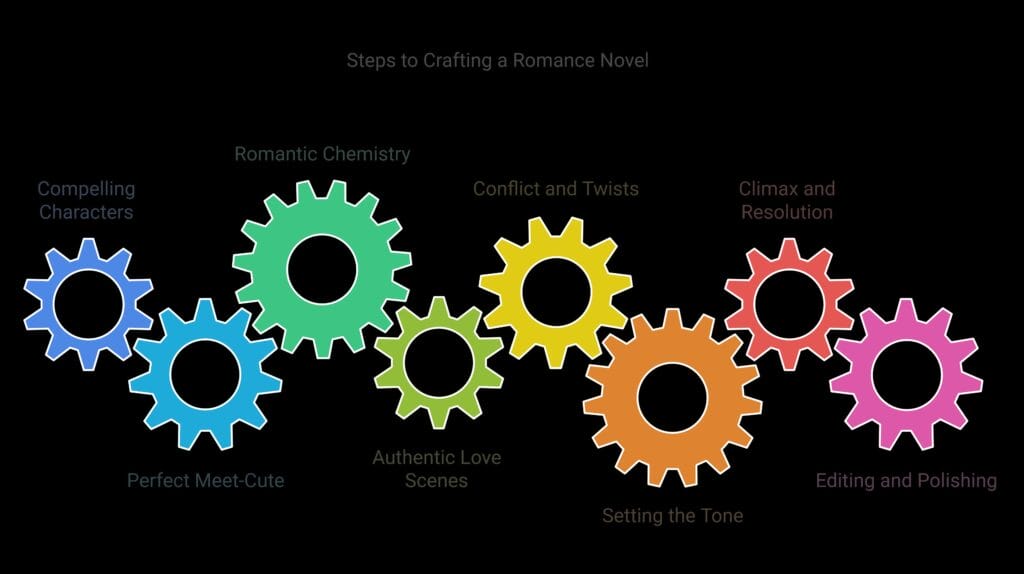
Final Takeaways: Top Tips for Writing a Romance Novel
- Try writing every day to build consistency.
- Make characters relatable and flawed.
- Develop natural chemistry between the romantic leads.
- Create conflicts that feel genuine and engaging.
- Write with passion and let emotions drive the narrative.
- Don’t shy away from love scenes; make them meaningful.
- Ensure your ending leaves readers satisfied.
Conclusion on how to write a romance novel
Whether you’re new to novel writing or an experienced romance novelist, crafting a love story that resonates with readers requires a balance of emotion, conflict, and authenticity. Romance stories thrive when they engage readers emotionally, making them feel the highs and lows alongside the characters. By following this step-by-step guide, you’ll be well-equipped to write a romance novel that captivates and enchants readers in 2025 and beyond. Step 1: Understand Your Audience Before you write, it’s crucial to understand who your readers are. Romance readers often seek emotional depth, compelling characters, and relatable situations. Spend time exploring popular romance subgenres—contemporary, historical, paranormal, and romantic suspense—so you can identify the themes and tropes that resonate most with your target audience.
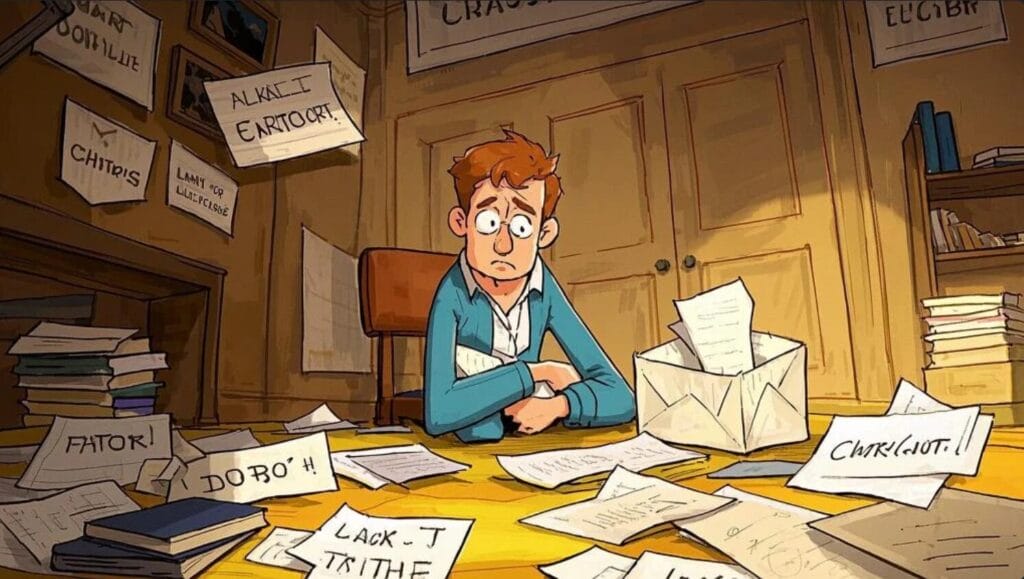
FAQ How to Write a Captivating Romance Novel
What are the key elements of a great romance novel?
To write a romance novel that captivates readers, you need to focus on several key elements. First, develop compelling characters that readers can connect with emotionally. These characters often fall into recognizable romance tropes that enhance the story. Additionally, a well-structured plot structure is essential, providing a clear arc with challenges and resolutions. The emotional journey between the two main characters should be at the heart of the narrative, ensuring that readers are invested in their relationship. Finally, infuse your story with romance fiction characteristics such as passion, conflict, and resolution to create a satisfying experience.
How do I choose the right subgenre for my romance novel?
Choosing the right subgenre for your romance novel is crucial as it helps define your audience and the expectations they have. If you’re interested in writing a historical romance, you will need to immerse yourself in the era you choose, ensuring authenticity in your characters and settings. For those drawn to the mystical, paranormal romance allows for creative freedom with magical elements. Alternatively, if you prefer modern settings and relationships, contemporary romance might be the way to go. Consider what themes excite you and what type of stories you love to read; this can guide you to the right subgenres of romance for your own writing.
What are some popular romance tropes to include in my story?
In the romance genre, certain romance tropes are particularly popular and can help shape your narrative. Classic tropes include the “enemies to lovers,” where two characters with opposing views find love, or “second chances,” which explores rekindled romance. The “fake relationship” trope is also a favorite, allowing characters to navigate their feelings while pretending to be in a relationship. Incorporating these familiar themes can create a great romance that resonates with readers. Ultimately, choose tropes that fit your characters and story to enhance the overall experience.
What is the best way to outline my romance novel?
A solid outline is a writer’s best friend when embarking on the journey to write a romance novel. Start by defining your main characters and their goals, motivations, and conflicts. Then, map out the key plot points, including the meet-cute, the rising tension, and the resolution of conflicts. Each chapter should have a purpose, driving the story forward while developing the
